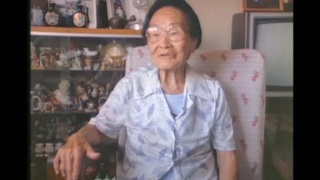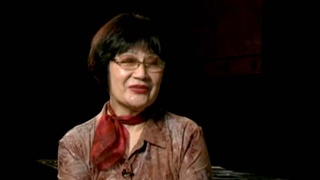Interviews
Learning to do farm labor at a sugar beet farm
After about 2 weeks there (Assembly Center), a man from the sugar beet field came. They wanted to recruit some young men to work in the sugar beet field in Nyssa, Oregon, and my husband said, “Hmm, this might be a good time to get out of here before we got sick” So I was the only woman. I volunteered to go and work in the sugar beet field.
In the first group, there were about 20 men, including my husband. And I was the only woman. They put us on a train at night. All the shades were pulled down and we didn’t know where we were going. In the morning, we came to Nyssa, Oregon. We got off and each family had a tent, a canvas tent to sleep in. They had 2 cots and a wood stove in a hundred degree weather. Summer time gets very hot there. Then they told us we have to have work clothes, work pants, work shoes and a hat and a hoe, short-handled hoe, and a file. Get those, go to the warehouse…hardware store and get them. So we all went, trotted over there to buy these and I think we bought out the store.
And 6 o’clock next morning, pick-up came and the farmer came to get us. So we all hopped on the back of the pick-up and away we went. And when we got to his field, the plants should be that tall, be easy to thin. You know, you leave just one plant and you knock off the rest of the plants and leave another plant about a foot apart. So boom, boom, boom. And all the time, you are bent like this. Oh what a backbreaking job.
Another family was with us – Uchiyama family. They were father, mother, maybe about 6 children. All experts, you know. They’re used to doing that. So they go boom, boom, boom, boom. They go up and down the row, you know. And my husband and I had never done it so we go boom and set up the plant and boom, set up the plant. It was just awful.
One day, I was…"I gotta do this right and I gotta move a little faster.” I was determined to do it right. And I was doing this and here…I almost hit a bull snake. It was curled up in the sugar beet field. You go “Oh!” and I thought, “Whah!” I screamed and yelled and ran out of the field as fast as I could. Anyway, I told my husband, “I don’t want to do sugar beet work anymore.” I said that’s the end. We were so slow, they paid us 35 cents an hour.
Date: December 6, 2005
Location: Oregon, US
Interviewer: Akemi Kikumura Yano
Contributed by: Watase Media Arts Center, Japanese American National Museum.











